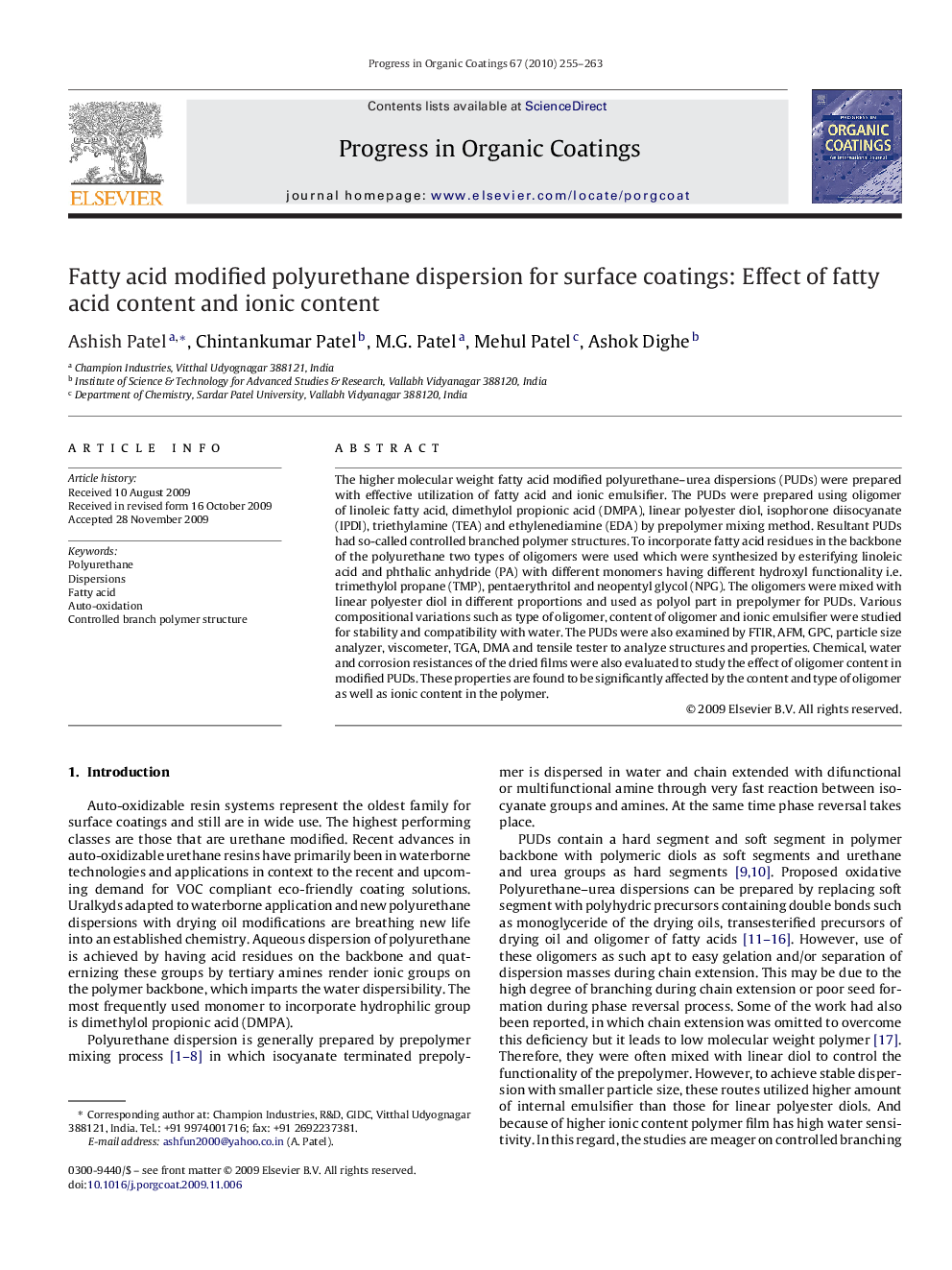| Article ID | Journal | Published Year | Pages | File Type |
|---|---|---|---|---|
| 693513 | Progress in Organic Coatings | 2010 | 9 Pages |
The higher molecular weight fatty acid modified polyurethane–urea dispersions (PUDs) were prepared with effective utilization of fatty acid and ionic emulsifier. The PUDs were prepared using oligomer of linoleic fatty acid, dimethylol propionic acid (DMPA), linear polyester diol, isophorone diisocyanate (IPDI), triethylamine (TEA) and ethylenediamine (EDA) by prepolymer mixing method. Resultant PUDs had so-called controlled branched polymer structures. To incorporate fatty acid residues in the backbone of the polyurethane two types of oligomers were used which were synthesized by esterifying linoleic acid and phthalic anhydride (PA) with different monomers having different hydroxyl functionality i.e. trimethylol propane (TMP), pentaerythritol and neopentyl glycol (NPG). The oligomers were mixed with linear polyester diol in different proportions and used as polyol part in prepolymer for PUDs. Various compositional variations such as type of oligomer, content of oligomer and ionic emulsifier were studied for stability and compatibility with water. The PUDs were also examined by FTIR, AFM, GPC, particle size analyzer, viscometer, TGA, DMA and tensile tester to analyze structures and properties. Chemical, water and corrosion resistances of the dried films were also evaluated to study the effect of oligomer content in modified PUDs. These properties are found to be significantly affected by the content and type of oligomer as well as ionic content in the polymer.
